033. Olympic Lift
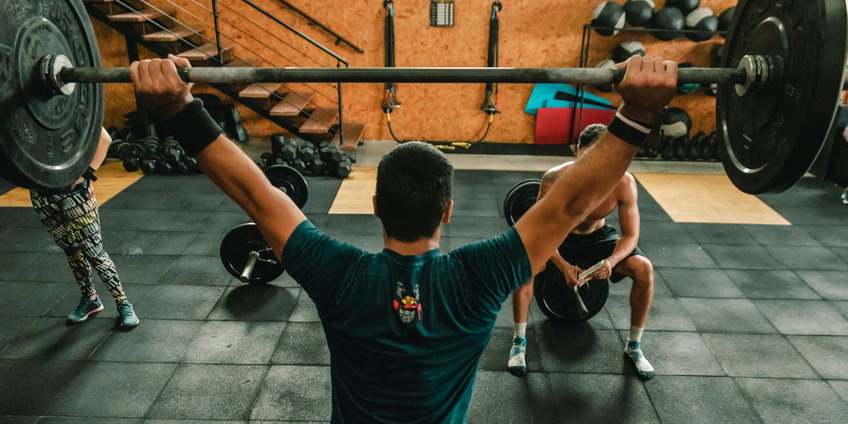
One powerful movement to rule them all.
Hinge, squat, push and pull are essential movements for building pure strength and strength dominant power. For pure strength development, use maximally heavy weights and lift them slowly and under control. For strength dominant power, lift sub-maximal weights abruptly and rapidly. First train for pure strength and then slowly move to power training by incrementally increasing lifting speed over time. After achieving a solid strength and power basis in 4 essential movements, you can experiment with more advanced, more complex, more efficient and more balanced movements.
Training essential movements separately will enable exceeding in strength and power to the fullest potential of each corresponding movement. Establish these movements as 4 pillars of your training and practice them regularly. Your next step should be focusing on concatenation of these 4 movements and development of balanced whole body power. The only way to do it is with Olympic style weightlifting, because it involves all 4 essential movements packed in one complex motion. Beside that, Olympic lifts are performed over the longest range of motion our bodies are able to reach: from the ground to the overhead position.
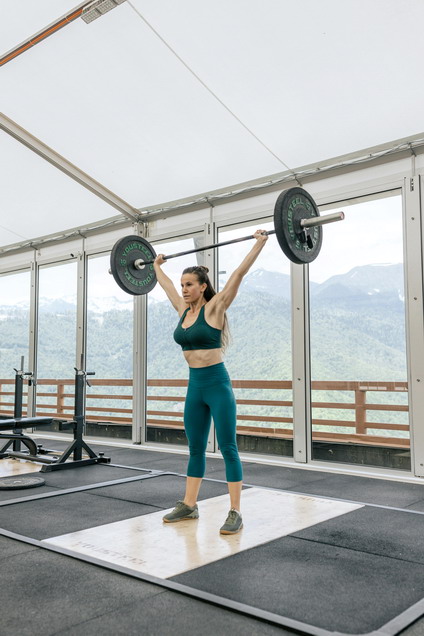
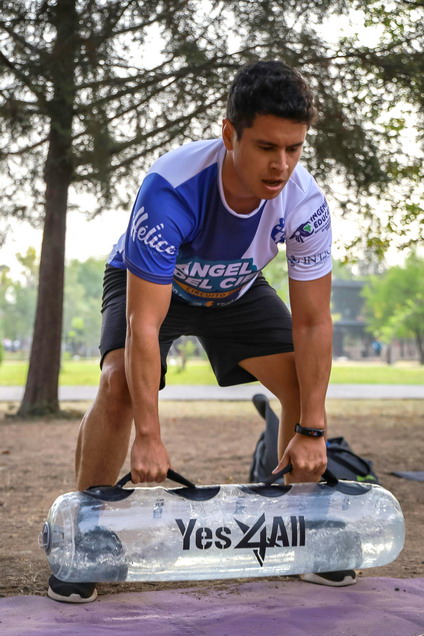
Olympic style of weight lifting requires significant amounts of strength, agility, precision, coordination, mobility and flexibility. Obviously, Olympic lifts are hard to learn and execute, but they are probably the best overall exercises you can choose for your power training. Synergy of high strength and fast lifting speed will result in development of a very valuable physical quality called strength dominant explosive power. Explosive power doesn’t mean maximal power, so it is assumed that the lifted weight is very heavy, but still below maximal weight athlete could lift. However, if the weight on the bar is maximal and athlete can not lift even a pound heavier weight, then it will be an expression of strength dominant peak power. Both types of power, explosive and peak, are manifested as instant burst of huge force, delivered in shortest possible time to finish the task. In case of explosive power, force is generated at sub-maximal levels using sub-maximal weights, while in case of peak power, force is generated exactly at the maximal level using maximal weight. You should always train for explosive power with sub-maximal weights. Training for peak power with maximal weight is potentially dangerous. Be careful, train safely and avoid injuries.
Explosive power is crucial quality for success in majority of sports. It is very desirable, very useful and very effective capability in everyday life. After all, explosive power is irreplaceable for solving or escaping different dangerous situations that may arise.
There are 2 styles of Olympic lifting: clean & jerk and snatch. Both are very powerful motions, can bring excellent results in athleticism and will be very beneficial for power transfer to sports. While being quite similar in essence, snatch is technically more demanding and requires more explosiveness, more balance, more flexibility, more mobility, etc.
There is a moment in the snatch lift when weightlifter falls into a deep squat with arms fully extended up and slightly backwards. Ordinary people can not hold a broomstick that way, not to mention a bone crushing weight. A legend says that onlookers can start to feel the pain in their shoulder girdle only from looking at the lifter in the bottom snatch position.
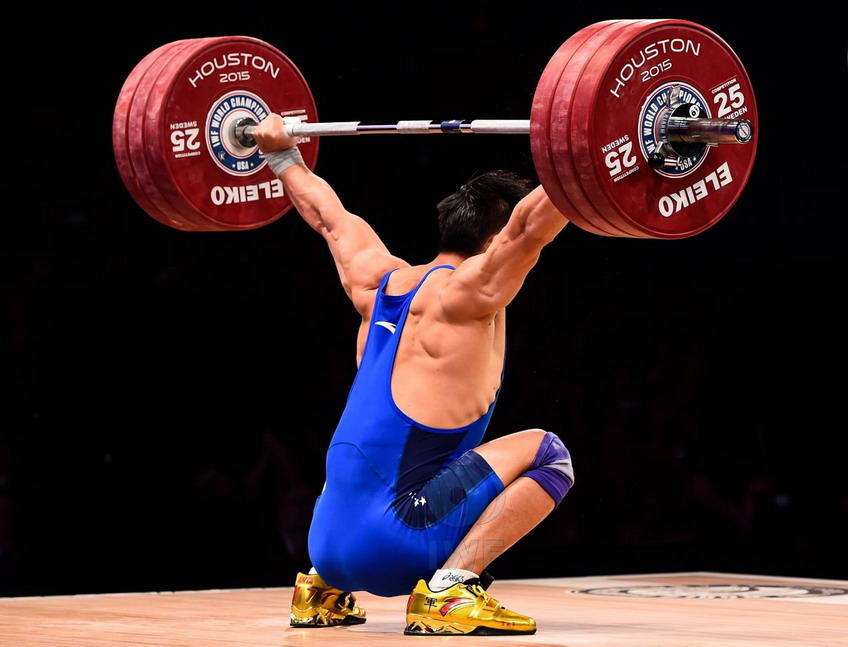
Holding a heavy barbell right above the head in uncomfortable deep squat position certainly brings some risks, so it would be wise to avoid such dangerous situation. Beside being more dangerous and harder to learn and execute, snatch is also a weaker lift then clean & jerk. With all this in mind, there is no need to bother yourself with snatch, unless you are planning a professional weightlifting career.
Therefore, you should focus on clean & jerk. Try to imitate movements of professional Olympic weightlifters and put it in practice. The movement itself is executed in 2 stages, with a short pause between them, quite enough for a few short breaths:
- 1st stage - clean: bring barbell from the ground up to the chest level.
- 2nd stage - jerk: bring barbell from the chest up to the overhead level.
You are free to modify this lift the way it feels natural and comfortable to you personally. For example, you can do it in 3 stages, with 2 pauses in between, like this:
- 1st stage - deadlift: bring barbell from the ground up to the thighs level.
- 2nd stage - hang clean: bring barbell from the thighs up to the chest level.
- 3rd stage - push jerk: bring barbell from the chest up to the overhead level.
Instead of regular clean, you can do power clean or hang clean. They are similar to regular clean, but instead of going into a deep front squat when catching barbell in the front rack position, you would go down only to shallow squat (above the parallel). In power clean you start from the ground, while in hang clean you start from the hang position.
Also, there is no need to do a tricky split jerk. Splitting legs forward-backward during jerk phase is risky move, because it can throw you out of balance, while the heavy barbell is right above your head. Rather slide your feet out to the sides to help bringing barbell to the overhead hold (power jerk) or simply do not move your feet at all and just go down into a shallow, above the parallel squat (push jerk).
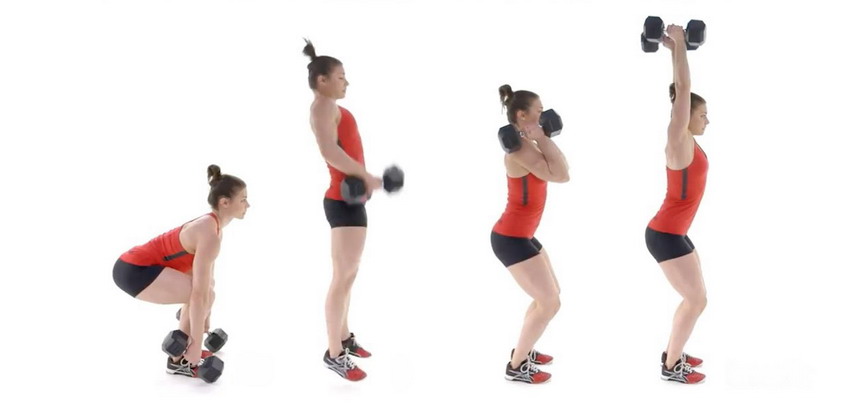
Here is how you can perform clean & jerk style of lifting, divided in phases:
- Lift barbell up from the ground and stand straight (hinge).
- With barbell in hands, slightly bend knees to initiate next lifting stage (squat).
- Straighten legs and pull barbell up with arms, to catch it on your chest (pull).
- With barbell on your chest, bend knees again to initiate next lifting stage (squat).
- Push with legs and arms to bring barbell up to over head position (push).
- Hold barbell there with straight arms for a short moment of time.
- Reverse all movements under control and put barbell down on the ground.
Don’t worry about complexity of proper Olympic technique, because everyone should be able to lift things this way. There is no need to be a professional weightlifter just to be able to put luggage in the overhead bin on a plane or a pickle jar on the kitchen shelf. Besides, the Nature and intuition will take care of your lifting technique and improve it over time.
If you have never lifted anything Olympic style, start doing it slowly and with empty hands. Later on, use a very light weight and gradually progress toward heavier weights. When you get used to the movement, try lifting the same weight quickly. If you become proficient in this lift and capable of handling heavier weights, then you may start working on explosive lifting of a regular barbell. That will be the perfect time to try imitating technique of professional Olympic weightlifters. Here is an example of possible weight progress:
- Single 1-gallon bottle of water ~ 8lbs
- 2 x 1-gallon bottles of water (one in each hand) ~ 2 x 8lbs = 16lbs
- Heavy medicine ball ~ 25lbs
- Single heavy dumbbell ~ 30lbs
- Big 5-gallon jug of water ~ 42lbs
- Average heavy sandbag ~ 50lbs
- 2 x heavy dumbbells (one in each hand) ~ 2 x 30lbs = 60lbs
- Barbell ~ 70lbs and up
You must rely on momentum and inertia to be able to lift weights heavier then it would be possible with slow lifting. That’s exactly what Olympic weightlifters do when they lift such enormous weights in a blink of an eye. To make it clear, momentum is object’s tendency to continue motion in the same direction, without further influence of force. Inertia is object’s tendency to resist changes in speed and direction, as well as tendency to remain still in place. Momentum helps barbell to continue traveling upwards during high pull phase. Inertia helps barbell to stay immovable at the chest level, while lifter drops down to catch it in overhead hold.
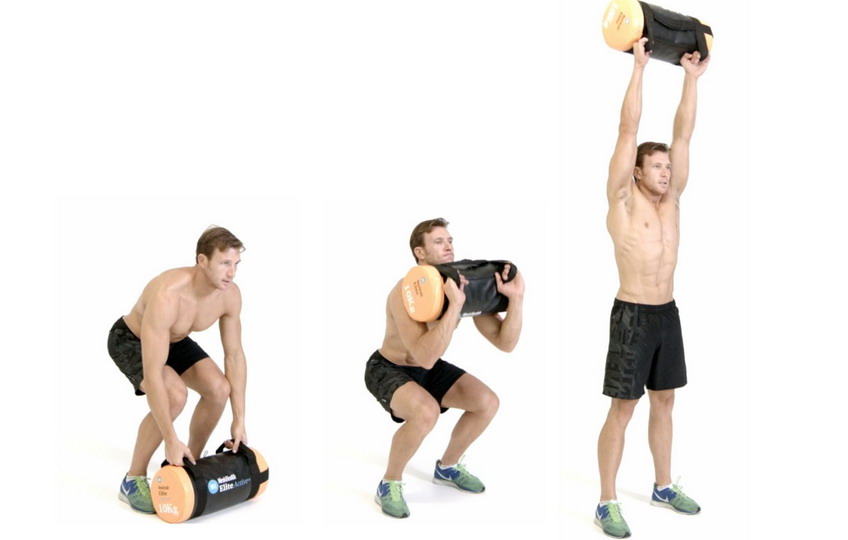
Add comment
Fill out the form below to add your own comments